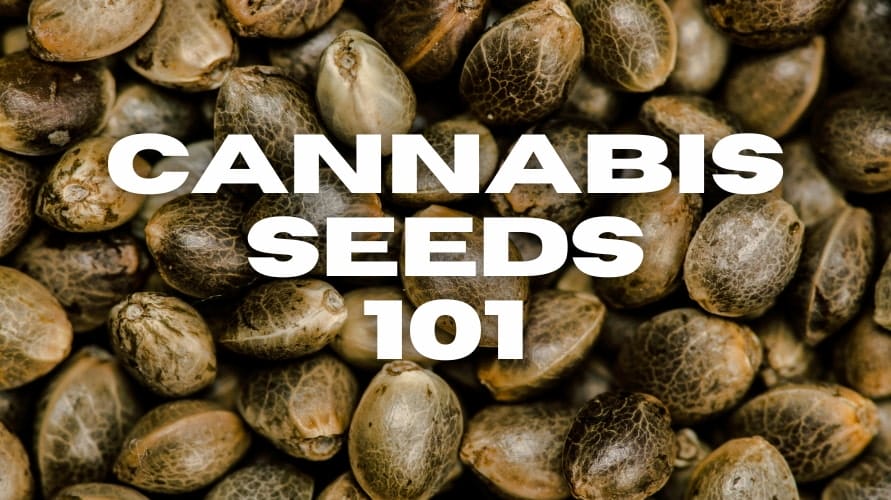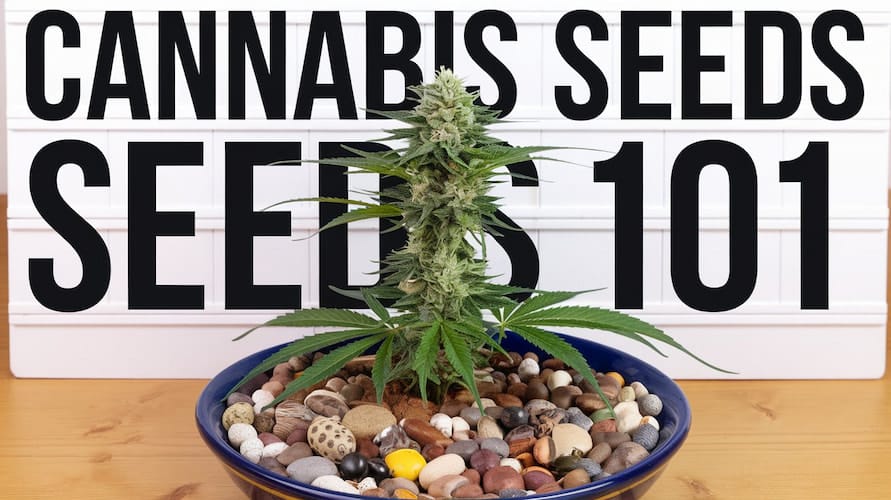Cannabis seeds are the foundation for growing cannabis plants, whether for recreational enjoyment or medical relief. They carry the genetic code that decides a plant’s size, shape, potency, and more. In this guide, you will learn about the main types of seeds, how to germinate them, and what it takes to grow healthy cannabis plants. We will also discuss legal considerations, ways to store seeds, and how cannabis use can affect both health and the environment.
What you’ll find here:
- An overview of regular, feminized, and autoflowering seeds
- A step-by-step look at germination and basic growing requirements
- Key information about legal concerns, strain types, and health impacts
Types of Cannabis Seeds
Cannabis seeds generally fall into three categories: regular, feminized, and autoflowering. Each type brings its own pros and cons, so understanding these differences will help you pick the right seeds for your needs.
Regular Seeds
Regular seeds come from male and female plants reproducing naturally. About half of these seeds will develop into male plants and the other half into female plants.
- Pros: Great for breeding new strains; often have stable genetics.
- Cons: Need to remove male plants if you only want female buds; not ideal for beginners who want simplicity.
Feminized Seeds
Feminized seeds are bred so that almost all of them grow into female plants. This means you get more bud-producing plants right from the start.
- Pros: Very high chance of female plants; saves time and resources.
- Cons: Often pricier than regular seeds; some growers say the genetic diversity can be lower.
Autoflowering Seeds
Autoflowering seeds begin flowering based on age rather than changes in light cycles. They are typically easier for new growers and faster to harvest.
- Pros: Easier to manage for beginners; shorter time from seed to harvest.
- Cons: Smaller yields compared to many regular or feminized strains; can be less potent in some cases (though this is improving with newer genetics).
How To Germinate Cannabis Seeds
Germination is the process that gets seeds to sprout roots and start growing. Most seeds need warmth, moisture, and darkness. While there are different ways to germinate seeds, one popular method is to use the paper towel technique.
- Moisten a paper towel (not dripping wet) and place it on a plate.
- Lay your seeds on the damp surface, leaving a bit of space between them.
- Cover the seeds with another moist paper towel.
- Put an upside-down plate or a cover on top to keep the area dark and humid.
- Check daily to ensure the towels remain moist.
Once you spot small white roots (taproots), plant the seeds carefully in soil or another growing medium. Some people choose to plant seeds directly in soil from the start, but the paper towel method lets you see which seeds sprout successfully.
Growing Requirements for Cannabis
Like any plant, cannabis needs the right environment to grow strong and healthy. The key factors to manage are soil quality, light, water, temperature, humidity, and airflow.
Soil and Nutrients
Cannabis prefers soil that drains well and has a slightly acidic pH of about 6.0 to 7.0. Nutrients—often labeled as “NPK” (nitrogen, phosphorus, potassium)—are vital for healthy growth. Many growers use specialty fertilizers designed for cannabis, following instructions carefully to avoid overfeeding.
Light and Water
Indoor growers commonly use LED or HID lights, providing around 18 to 24 hours of light a day in the seedling and vegetative stages. Outdoors, cannabis plants need plenty of sunlight. Watering too much can lead to root problems, so aim to keep the soil just moist enough—water when the top layer feels dry.
Temperature and Humidity
Most cannabis plants do best between 70°F and 85°F (21°C to 29°C). Younger plants like higher humidity (about 60%), while flowering plants thrive at lower humidity levels (around 40% to 50%).
Ventilation
Proper airflow helps prevent mold and pests. Indoor growers use fans or ventilation systems to move air around. Outdoors, make sure there’s enough space between plants for a breeze to pass through.
Legality of Cannabis Seeds
The legal status of cannabis seeds varies widely across the globe. Some countries allow personal grows for both medical and recreational use, while others allow only medical grows—or ban cannabis entirely. If you plan to grow cannabis, always check your local laws first. You could face fines or other penalties if you break regulations on seed possession or plant counts.
Cannabis Strains and Their Effects
Cannabis strains are often labeled as Indica, Sativa, or Hybrid, each offering different effects. Indica is typically linked to relaxation and sedation, making it popular for nighttime use or stress relief. Sativa often provides an energizing, uplifting experience that people sometimes use for creativity or social activities. Hybrid strains blend traits from both Indica and Sativa.
Cannabinoids, such as tetrahydrocannabinol (THC) and cannabidiol (CBD), also play a major role in how a strain feels. THC is responsible for the “high,” while CBD is non-psychoactive and is often used for anxiety or inflammation. Different strains also contain various terpenes that influence flavor, aroma, and additional effects.
Selecting and Storing Cannabis Seeds
When choosing seeds, it’s helpful to consider:
- Breeder reputation: Established breeders typically offer more reliable genetics.
- Strain characteristics: Think about the effects, flavor, and growing difficulty.
- Seed type: Decide whether you want regular, feminized, or autoflowering seeds.
Once you have your seeds, store them in a cool, dark, and dry place. Many growers use airtight containers in a cupboard or refrigerator. Moisture and light can trigger germination or damage seeds, so avoid exposing them to these conditions until you’re ready to plant.
Potential Health Benefits and Risks
Cannabis may offer potential benefits such as relief from pain, anxiety, and stress. Some people also use it to help with insomnia or other sleep issues. However, it is not without risks. Heavy or prolonged use can lead to dependence or harm cognitive functions like memory and concentration. If you’re considering cannabis for medical reasons, consult a healthcare professional. It’s also wise to start with small doses and pay attention to how your body reacts.
Environmental Impact
Growing cannabis can affect the environment through water usage, energy consumption (especially with indoor grows), and the use of pesticides or fertilizers. Sustainable methods—like organic soil, composting, and careful water management—can reduce these impacts. Many growers also look for ways to minimize electricity use, such as using energy-efficient LED lights and natural daylight whenever possible.
Where To Buy Cannabis Seeds
In places where cannabis is legal, you can buy seeds at local dispensaries, specialty garden stores, or online seed banks. A popular online option is Seeds Here Now, known for its wide variety of strains. Always make sure you’re following local regulations, as even ordering seeds online might be restricted in some areas.
Conclusion
Cannabis seeds are packed with the potential to grow healthy, productive plants. To make the most of them, focus on choosing the right seed type (regular, feminized, or autoflowering), germinating correctly, and giving your plants the ideal combination of soil, light, water, and airflow. Remember to stay informed about cannabis laws in your area and consider both the benefits and risks if you plan to use cannabis yourself. By storing seeds properly and adopting sustainable practices, you can enjoy a rewarding growing experience while being mindful of the environment.
Ready to grow your own? Shop our wide selection of regular, feminized, and autoflower cannabis seeds today.
FAQs
How long does germination usually take?
Most cannabis seeds sprout within 2 to 7 days, though some can take up to 2 weeks.
Do I need special equipment to grow cannabis indoors?
You’ll likely need grow lights, a way to circulate air, and tools to monitor temperature, humidity, and soil conditions.
Why remove male plants if I use regular seeds?
Male plants don’t produce the buds most people smoke, and they can pollinate females, leading to more seeds instead of thick, seedless buds.
Is it safe to store seeds in the freezer?
Some experienced growers do freeze seeds, but it’s risky if moisture finds its way in. A fridge or a dark, dry cupboard is usually safer.
Are autoflowering seeds good for beginners?
Yes, because they don’t rely on light-cycle changes and often mature more quickly, making them simpler for new growers.




